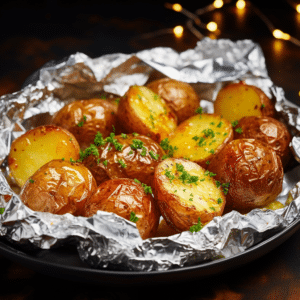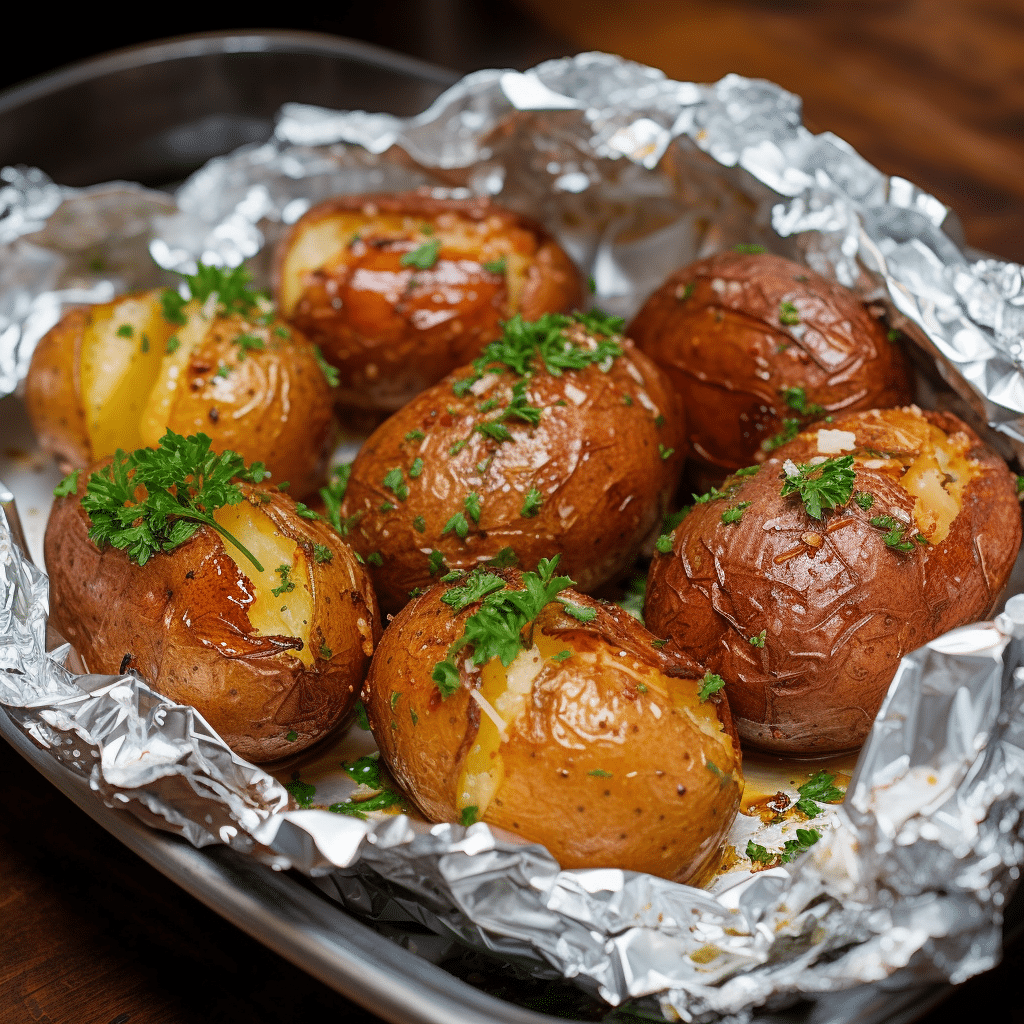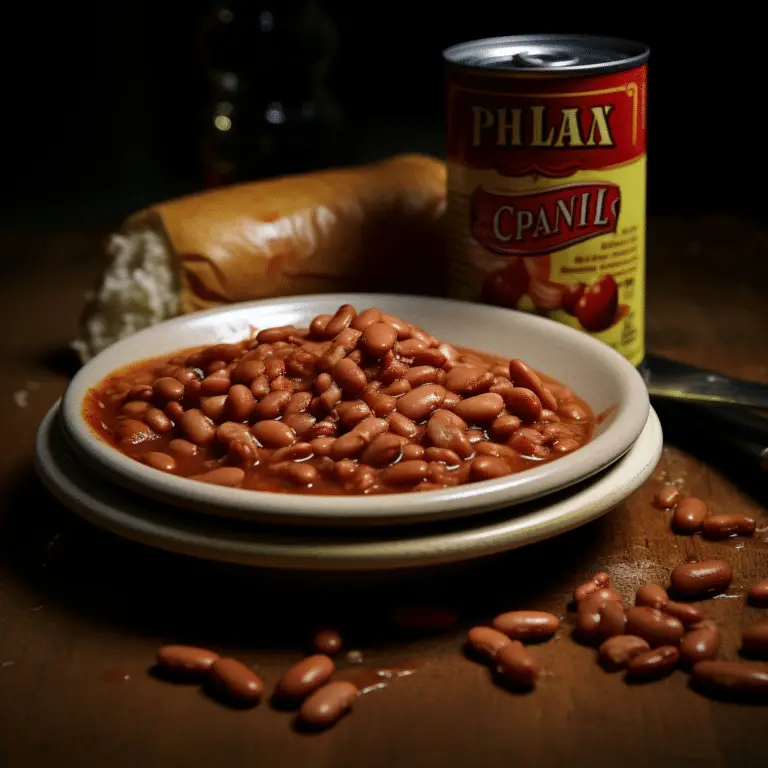Perfectly Baking Potatoes in Foil at 375 Degrees
Spring, summer, winter, fall…there is no wrong time to bake potatoes in foil. Baked potatoes are an all-time favorite for many. Perfectly baked potatoes are the best vessel to load up on toppings like sour cream, cheese, and butter to complete any meal.
Regarding baking potatoes in foil, everyone has their favorite methods and recipes. But if we’re talking about how long you should bake potatoes, specifically at 375 in foil, there are a couple of things to consider. Read on to learn more about how long it will take to bake potatoes at 375 in foil and a lot more on baking potatoes.

How Long To bake Potatoes At 375 In Foil?
The answer to this question depends on various factors, like the type of potato you’re baking, its size, etc. But as a step guide, baking foil-wrapped potatoes at 375 degrees Fahrenheit generally takes between 60 to 70 minutes in a preheated oven. This is longer than baking potatoes uncovered.
Why does it take longer to bake potatoes at 375 in foil?
It’s good to understand that wrapping potatoes in foil doesn’t make them bake longer, nor does baking them unwrapped make them cook quicker. The amount of time needed to bake potatoes at specified temperatures remains the same.
However, when you bake potatoes in foil, the foil needs to be heated first before the potato can begin to bake. This is in contrast to when baking them without foil. For this reason, the overall time for baking potatoes in foil is considerably increased as you have to factor in the time needed to heat the foil.
How To Tell If Potatoes In Foil Are Cooked
Despite having specified times for how long you expect your potatoes will be ready, it’s good to test them to see if they’re cooked or not. When checking potatoes’ doneness in foil, unwrap the potato and pierce it with a fork. If the fork goes through and slips off, your potatoes are ready.
However, if your potatoes are difficult to break apart, they’re most likely undercooked and may be tough to chew. You can also consider using a food thermometer when checking your potatoes’ doneness before taking them out of the oven.
Your potatoes should be ready when the internal temperature registers 210 degrees Fahrenheit. During this temperature, the potatoes’ starch granules have absorbed water, burst, and rendered the inner flesh fluffy and light.
How To Bake Potatoes In Foil
To bake potatoes in foil, you will need:
- Potatoes – you can use any potato you prefer, red, sweet, baby, or Idaho. However, russet potatoes are best recommended for baking.
- Salt and pepper – these two work like magic when baking potatoes in foil. If you like spicier potatoes, you can add more spices of your choice, like paprika, onion powder, etc.
- Olive oil – feel free to use other oils like canola if you don’t have olive oil.
- Toppings – there are various toppings you can use with your baked potatoes. Check below for more ideas.
Baked Potatoes toppings Ideas
Here are a few ideas you may be interested in trying:
- Sour cream or greek yogurt and chives.
- Salsa.
- Bbq sauce and cheddar cheese.
- Butter, salt, and pepper.
- Vegan queso.
- Leftover chilli.
Procedure
Clean the potatoes – potatoes come from the ground and can sometimes have dirt or residue left behind on your tater. To clean them, run the potatoes under warm water and use a scrubby brush to clean the skin of the taters.
Pat dry with a towel.
Rub with olive oil and season – it’s time to drizzle your potatoes with olive oil. You can drizzle the oil and then massage it into the potatoes’ skin to ensure every knick and cranny is covered.
Generously season your potatoes with salt, pepper, and any spice of your choice.
Wrap in foil – wrap the seasoned potatoes in foil. Remember, there’s no right or wrong way of wrapping potatoes in foil. So, use your judgment and get rolling.
Wrapping potatoes in foil has various benefits. One, the foil traps the heat close to the potatoes, making the potato cook evenly. Two, the potatoes stay warmer longer as the foil insulates them than when baked without foil.
- Poke holes in the potatoes – you can decide to poke holes in your potatoes or leave them without holes. Either way, the results will be equally good.
- Cook the potatoes – you can bake your potatoes in the oven or on the grill. You can even bake potatoes in the crockpot. Choose whichever method that works for you.
Oven – when using the oven, preheat it to 375 degrees Fahrenheit and place your potatoes on the oven rack. Let them cook for 60-70 minutes, rotating after 30 minutes. Use a fork to pierce the potatoes to see if they are soft and cooked.
Grill – preheat your grill to 450 degrees Fahrenheit, place your potatoes in foil directly on the flame, and cover. Let them cook for 45-60 minutes, rotating them after 10 minutes. Note that the total time required will depend on the potatoes’ size. So, use your fork to check doneness.
Once cooked, let the potatoes cool for 15 minutes (for both methods) before unwrapping to avoid burning yourself. Serve immediately or refrigerate for later.
What Should You Serve With Baked Potatoes?
If you’re wondering what you can serve with this little haven, here are great baked potatoes accompaniments:
- Steak with garlic butter.
- Grilled Bbq chicken.
- Slow cooker beef short ribs.
- KFC coleslaw recipe.
- Cheeseburger meatloaf.
- Beef tips with gravy.
- Beet wellington with balsamic reduction.
- Panera broccoli cheddar soup.
- Honey glazed salmon.
- Bbq baked beans.
- Baked lemon butter tilapia.

Conclusion
How long to bake potatoes at 375 in foil depends on the potatoes’ type and size. But generally, potatoes baked in foil at 375 take between 60 to 70 minutes before they are cooked.
Don’t rely on the timing alone when baking potatoes, though. You can test the potatoes by inserting a fork inside. If it slides through easily, the potatoes are cooked. Or use a food thermometer. You’ll know your potatoes are nice and cooked when they reach an internal temperature of 210 degrees Fahrenheit.






